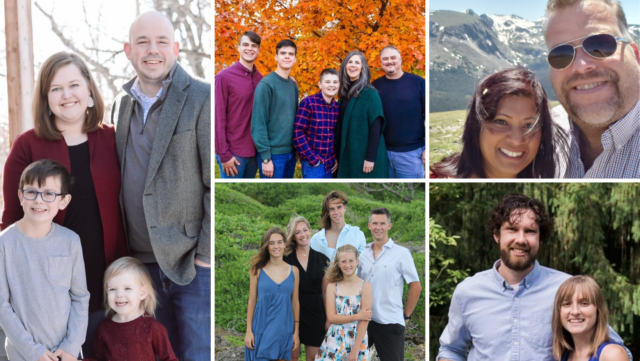I must be a glutton for punishment. The Art of Neighboring, from the book to actually living it out, is difficult for me. But chapter 3 is perhaps the most convicting of all the chapters.
The conviction starts right from the start:
“The number-one obstacle to neighboring well is time… it’s vital to take a step back and ask ourselves if we live at a pace that allows us to be available to those who live around us.”
We might be tempted to believe that small towns are immune to the fast pace of life. The so called “advancements” of the past 15 years afflict small towns as much as the big cities. Sending mail electronically while riding in your car and talking on a phone is one such advancement. Texting is one such advancement. So is hearing the ding alerting me of my latest Facebook message. As my Vineyard pastor friend Bill Herzog likes to say “we’re so connected we’re disconnected”.
And yet I believe the opportunity for more free time is greater in the small town. My first church plant was in a small town. Most of the people worked and lived in the town or at least they worked somewhere in the county. Think of all the hours suburbanites spend commuting to work. My small town friends and I had 5 to 10 minute commutes. But small town folks are still faced with difficult decisions when it comes to time.
Difficult Decisions
Dave Runyon, one of the book’s co-authors, presents us with a real world difficult decision. Dave loves baseball. He even coached high school baseball. At the writing of the book he had a nine year old son who was good at baseball. In fact he was good enough at 9 years old to play on a travel baseball team. Yes travel teams – once the domain of high end high school talent – now exists for grade schoolers! Dave’s family decided that to be available for his neighbors meant his son would forego travel baseball. Instead they played in the local rec league. Even as a dad of a travel baseball player I’d say Dave made the right choice both from a neighboring perspective and a family health perspective.
 This is where it gets tricky in small towns. Small towns value athletics. (One study suggests they’re even better at producing pro athletes). One great way to connect with others in a small town, to experience community and to start relationships is through athletics. And yet sports is a (perhaps the) great idol in America. Church planters in small towns will have to navigate the missional waters of being involved and yet not being like everyone else who crams life to its fullest. The wise planter will figure out how to be engaged and involved in the life of the community while at the same time having margin in his or her life.
This is where it gets tricky in small towns. Small towns value athletics. (One study suggests they’re even better at producing pro athletes). One great way to connect with others in a small town, to experience community and to start relationships is through athletics. And yet sports is a (perhaps the) great idol in America. Church planters in small towns will have to navigate the missional waters of being involved and yet not being like everyone else who crams life to its fullest. The wise planter will figure out how to be engaged and involved in the life of the community while at the same time having margin in his or her life.
Dave reminds us we all have choices to make. Yes due to the availability of technology and increase of recreational options small towns are facing the same temptations as metro areas. But small town folks still value a slower pace of life. The church planter, particularly the bi-vocational church planter will need to make choices that allow him or her to live at that slower pace. Small town folks value relationships. They value people stopping in the aisle at the grocery store and having a conversation. Spending a whole Friday night at the big home game is valued – from pep rally to tail gaiting to the post-game band performance. The small town planter who doesn’t have margin for small town life will not fit into the fabric of the town. They’ll risk not being accepted in the town as they’ll be branded as “too busy”. Worse, as Dave points out, they risk not fulfilling the Great Commandment.
In using the story of Mary and Martha where Martha is “reprimanded for serving Jesus” Dave inadvertently gives hope to the small town pastor. Too many suburban churches are programmed and ministry’d to death. Small town churches rarely have that, eh ’em, luxury. Small town churches do well to have small groups, a Sunday service and some form of community outreach. They simply don’t have the resources to be over programmed. This is where the small town pastor has an advantage over her suburban clergy counterparts. She can be available. The town can truly be her parish. Living with margin gives space for the pastor to be interrupted by the lives of his neighbors.
More Time Tools
Chapter 3 ends with 3 “More Time Tools”: make the main thing the main thing, eliminate time stealers, and be interruptible. Let me comment on the first tool. Using ruthless creativity the small town planter must make neighboring one of the main things. Community, neighboring, and relationships are that valued in a small town. Having a more well produced service, a better looking power point, or a slicker logo will not outweigh your lack of time to actually hang with people. If given the choice between spending one more hour crafting your Sunday service or hanging around the fire pit with your neighbors then by all means choose the fire pit.
The sweet spot would be the fusion of family life, church planting life, and friendship life. Neighboring is that sweet spot where we spend time as a family making friends with our neighbors all the while living out our faith. But the fact remains that takes time.
Questions
- What unique time barriers to neighboring exist in small towns?
- When it comes to time barriers what advantages do small towns have? What disadvantages?
- Have you ever readjusted your schedule so you could better obey the Great Commandment?
- What time stealer (“not evil, just useless”) do you struggle with?
************************
About the author
Joel Seymour is beloved child of God, the husband of Kristi, the father of 3 great kids, and the lead pastor of the Lancaster Vineyard. Although Lancaster is a mid-sized town, his first church plant was in a town of 5,000. He serves on the team of the Small Town Vineyard Partnership and as an Area Leader for Vineyard USA. His particular Area is mainly comprised of villages, small towns, and rural areas. He can be reached through Twitter @JoelSeymour or via email [email protected].





